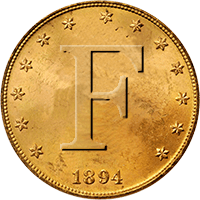So I have read a ton of threads about cleaning coins and they all seem to have a plethora of effective solutions for cleaning coins but they also caveat every method by saying not to clean valuable coins.
I am confused because some of the IH, wheats, 2cent, etc. coins are pretty dirty and take some really hard toothbrush and soap scrubbing to get not even close to "clean". I have considered some of the methods listed on this site but am really worried that I will destroy the value of the coins. Even if I am cleaning a common wheatie I still want to do it in a neumasitacally appropriate way, if for nothing more than practice for when I have a valuable coin. For the record, I am not talking about taking a wire brush to a silver coin, I am interested in more of the soaking of pennies in H202 or other similar methods (e.g., acetone) - these destroy the value of key date coins?
So what's the deal - just never clean a potentially valuable coin? I am not looking to sell my coins, but I would personally never buy one of these dirty coins but maybe coin collectors value the crud on dug coins?
Thanks.
I am confused because some of the IH, wheats, 2cent, etc. coins are pretty dirty and take some really hard toothbrush and soap scrubbing to get not even close to "clean". I have considered some of the methods listed on this site but am really worried that I will destroy the value of the coins. Even if I am cleaning a common wheatie I still want to do it in a neumasitacally appropriate way, if for nothing more than practice for when I have a valuable coin. For the record, I am not talking about taking a wire brush to a silver coin, I am interested in more of the soaking of pennies in H202 or other similar methods (e.g., acetone) - these destroy the value of key date coins?
So what's the deal - just never clean a potentially valuable coin? I am not looking to sell my coins, but I would personally never buy one of these dirty coins but maybe coin collectors value the crud on dug coins?
Thanks.
